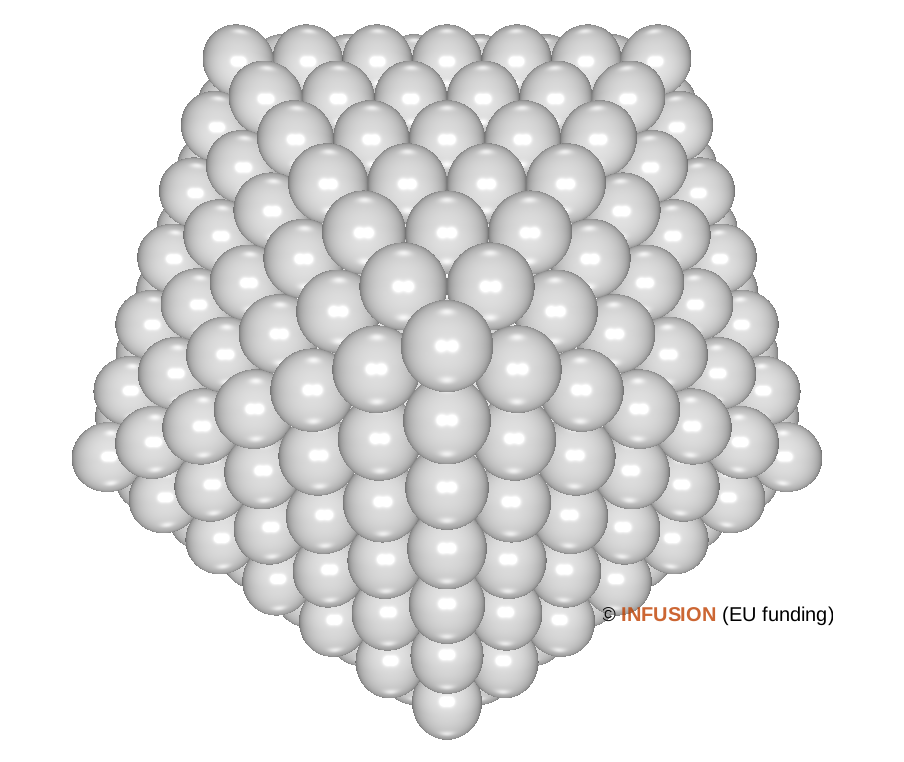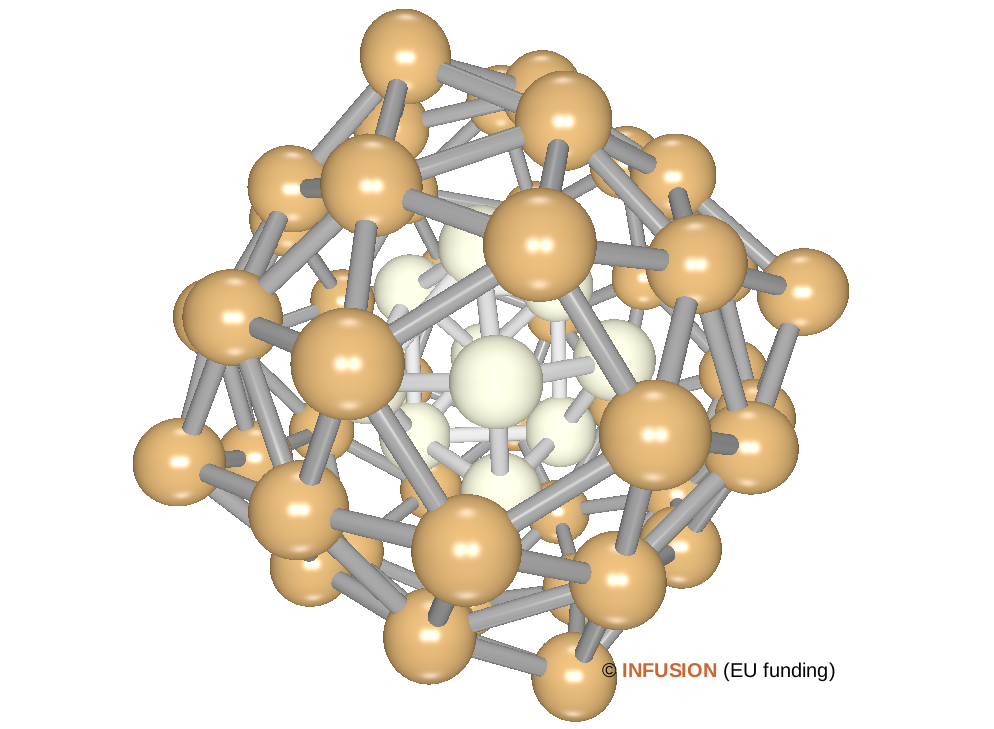Metal nanoparticles
Metal nanoparticles are clusters with sub-micrometer dimension composed of a pure metal, or made of a metallic compound. Among remarkable optical properties [1], colloidal solutions of gold and silver nanoparticles have beautiful colors that have been exploited since centuries. Nowadays, metal nanoparticles are widely used in industry (e.g. as catalysts) and medicine [2] (e.g. as contrasting agents in several imaging techniques).
|
Depending on the production method used, metal nanoparticles can adopt various shape and size. For elements like gold and silver that crystallize in the fcc structure, the nanoparticle is bounded by (111) and (100) dense faces. An icosahedron structure, despite its fivefold symmetry, is more frequently observed at small size. Interestingly, icosahedra can be favored by kinetics at larger size [3], although they are predicted to be less stable than octahedra and cuboactedra. The figure on the right is a hard-sphere model of an icosahedral nanoparticle seen along a fivefold rotational axis. There are seven atoms along the edges of the icosahedron, the external surface contains 362 atoms. Icosahedra with increasing size can be nested inside each other, like Russian dolls. The nth layer contains 2+10n² atoms, the one depicted in the facing figure corresponds to n = 6. In multi-shell icosahedral nanoparticles, the distance between successive parallel facets is 16% larger than the close-packing distance realized along the [111] direction of the fcc bulk structure. Accounting for the atom at the center of the first shell, the smallest full icosahedral nanoparticles totalize 13, 55, 147, 309 ... atoms. These can be considered as "magic numbers". |
 |
 |
Small clusters with a non-magic number of atoms may adopt a closed-shell structure more exotic than nested icosahedra. The facing figure is a ball-and-stick model of a Au nanoparticle composed of 58 atoms. Its shape has been predicted by computer simulation as the most stable isomer having this composition [4]. The structure has a fourfold symmetry axis. The core, depicted in light color, has 10 atoms. Its largest dimension is 0.62 nm. The outer shell is a polyherdon having two opposite squares and 88 triangles. There are eight five-coordinated atoms in addition to the eight atoms located at the vertices of the two squares. The remaining 32 atoms of the outer shell have six-fold coordination [4]. The diameter of the Au58 nanoparticle is 1.12 nm, which is the diameter of the sphere containing the center of the most-protruding atoms. |
- "The optical properties of metal nanoparticles: the influence of size, shape, and dielectric environment" K.L. Kelly, E. Coronado, L.L. Zhao, and G.C. Schatz, J. Phys. Chem. B 107 (2003) 668-677 [DOI: 10.1021/jp026731y].
- "Introduction to metallic nanoparticles" V.V. Mody, R. Siwale, A. Singh, and H. R. Mody, J. Pharm. Bioallied Sci. 2 (2010) 282-289 [DOI: 10.4103/0975-7406.72127].
- "Direct comparison of kinetic and thermodynamic influences on gold nanomorphology" A.S. Barnard, Acc. Chem. Res. 45 (2012) 1688-1697 [DOI: 10.1021/ar3000184].
- "Global minimization of gold clusters by combining neural network potentials and the basin-hopping method†" R. Ouyang, Y. Xie, and D. Jiang, Nanoscale 7 (2015) 14817-14821 [DOI: 10.1039/c5nr03903g].